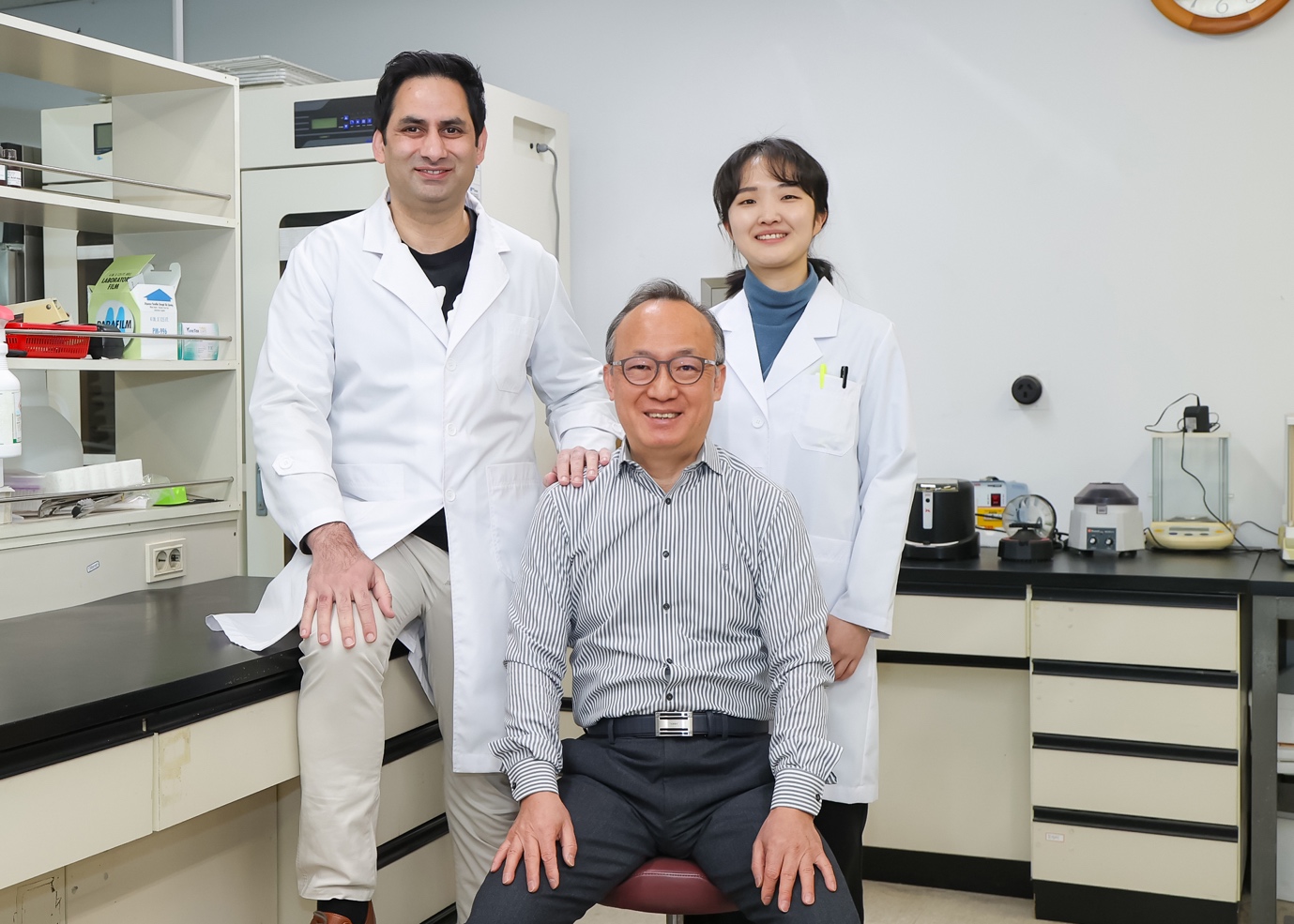Professor BAE Han-hong’s team of YU registered a paper at the Biological Research Information Center, “Hanbitsa” N
No.9547303- Writer PR team
- Date : 2024.02.16 14:45
- Publication Date : 2024.02.01
- Views : 3014
Systematic study on the process and response by which sound is detected by plant cells
Published in the prestigious international journal, Journal of Advanced Research
R&D plan to identify precise mechanism by which sound signals are recognized and transmitted by plants
[February 01, 2024]

<From the left, Professor Ali Sajad, Professor BAE Han-hong, and student PARK Soo-bin>
A paper was published by Professor BAE Han-hong (59) of YU Department of Biotechnology on “Sound detection by plants” in “Hanbitsa” of Biological Research Information Center (BRIC).
The paper was published in the Journal of Advanced Research (impact factor (IF) 12.822), an international renowned journal in the field of biotechnology, in December last year under the title of “Understanding the Mechanobiology of Phytoacoustics through Molecular Lens: Mechanisms and Future Perspectives.” Professor Ali Sajad (40), Professor Tyagi Anshika (35), and PARK Soo-bin (Department of Biotechnology, 27), a doctoral student, participated as the co-first authors and Professor BAE Han-hong participated as the corresponding author.
Plants are known to have eyes and noses.When a plant is attacked by an insect, it releases volatile substances. These substances are detected by the plant's nose to prepare for defense and, depending on the type of light reflected from the surrounding plants, competing plants can be seen with the eyes.However, researches on the roles of the ear in detecting sounds are still insufficient and only a small number of groups conducted such researches.Professor Bae's research team systematically studied the process by which mechanical signals called sound (sound waves) are detected by plant cells and the reactions that occur thereafter.
Professor BAE said, “Based on the results of plant researches using sounds, it is expected that economic effects may be obtained in various fields such as stress-resistant plants, production of useful substances, plant growth promotion, and post-harvest management. We plan to continue researches to identify the exact mechanism by which (sound wave) signals are recognized and transmitted in plants.”
Professor BAE’s main research field is “molecular metabolic engineering.”He is studying mechanisms of perception and transmission of sound signals using a model plant, Arabidopsis thaliana.He is also conducting researches on endophytic microorganisms that coexist within plant tissues, like human intestinal microorganisms, on wild ginseng and is focusing on researches related to development of useful substances using endophytic microorganisms.